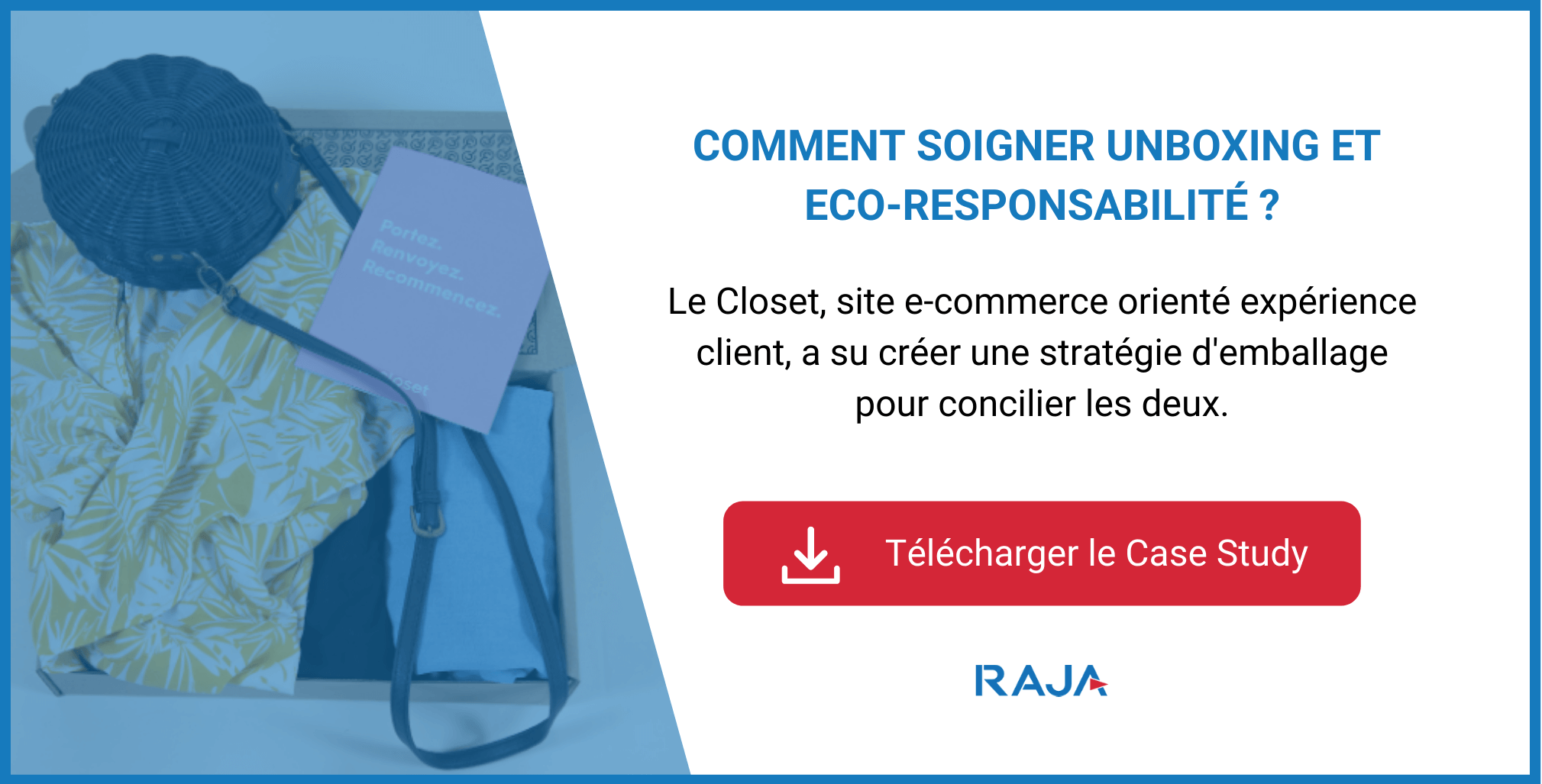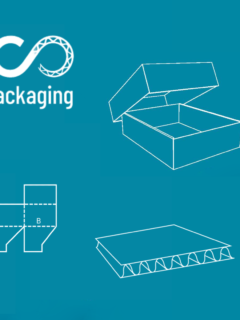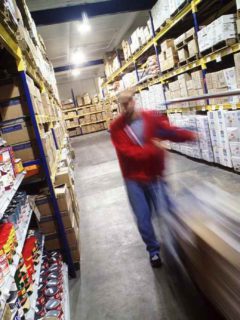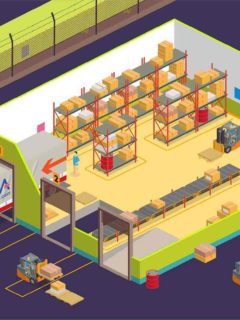You’ve made up your mind: you want to create an unforgettable customer experience that will leave a lasting impression on your consumers and promote your company’s values. And what better way to do this than to differentiate yourself through the packaging of your goods?
But as you look for information on this subject, you wonder what you should choose: customised packaging? Or should you go for 100% customised packaging?
To help you think about it, find out the difference between customised and personalised packaging, and decide which process to follow, depending on your needs.
What is packaging customisation?
Packaging customisation is a process that focuses mainly on the aesthetic aspect of the professional packaging you want to design.
In this sense, it can consist of printing your packaging in your brand colours, printing your logo, slogan or marketing message on it. You can also decide to personalise your adhesive tapes, or your packaging paper or cushioning materials.
But personalising your packaging can also mean embossing it. This is a technique thatembosses an element onto the packaging, giving it a premium feel, especially for brands that position themselves as luxurious.
Why opt for personalised packaging?
Packing your products in personalised packaging is all about the experience you offer your customers when they receive their orders.
You can choose to customise your packaging to :
- Differentiate yourself from the competition. With customised packaging, you can highlight your brand’s image, respecting its visual identity, DNA and values (particularly your company’s commitment to environmental responsibility).
- Create a real customer experience around your packaging. By doing so, you can highlight your products when they are unpacked, and take care of their unboxing, while ensuring their protection. This encourages word-of-mouth about your brand, especially via social networks, with customers filming themselves unpacking their orders.
- Communicate your brand. Customised packaging allows you to communicate about a special offer, a promotion, a marketing campaign… But you can also use it to transmit information about your packaged product, or to collect customer reviews, all in an innovative way (by attaching a QR Code to it, for example).
For more inspiration, check out our 6 examples of successful customer experiences with e-commerce packaging.
How does this process work?
A wide range of packaging can be customised. It can be anything from :
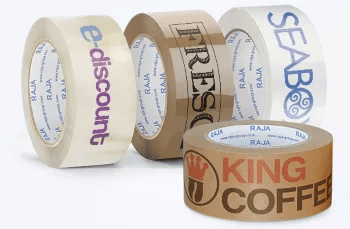 |
Your own tape, with your logo or specific text, via the Rajaprint online personalisation tool. |
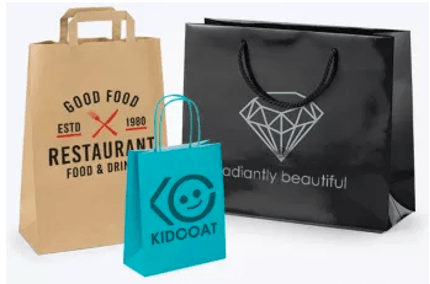 |
Your bags, which you can also personalise via the Rajaprint online tool. |
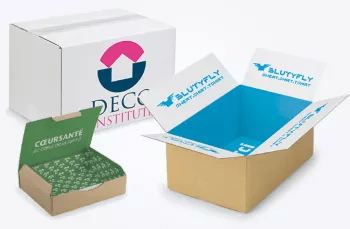 |
Your boxes and crates |
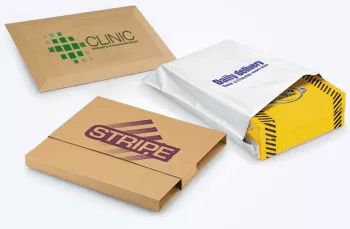 |
Your pockets and envelopes |
To personalise a cardboard box, carton, envelope or any other packaging item, you will need to create a brief for your packaging supplier. This can be relatively simple: you can simply indicate the elements you want printed or embossed on it, as well as the category of packaging to be personalised.
Personalising your packaging is quick and easy, and it’s a great way to leverage communication and customer experience for your shipments!
What is custom packaging design?
The creation of customised packaging is a process that combines the practical and aesthetic aspects of your packaging.
Typically, it involves customising the dimensions, volume and materials used in the manufacture of packaging, as well as the design of your packaging, with the ultimate aim of protecting your goods and providing a memorable experience for your customer.
Why customised packaging?
If the ultimate goal of custom manufacturing your packaging solutions is to ship your goods with optimal protection, additional benefits follow.
You can opt for customised packaging for :
- Reduce over-packaging, for example by reducing the use of cushioning materials in your industrial packaging.
- Reduce your logistics costs, by using less raw materials in your packaging solution, but also by reducing their weight-volume, which is the method of invoicing by transport providers for express or international shipments.
- Gostraight to the letterbox, on small and light products. In this sense, custom-made packaging can also be a vector of customer experience, since you limit your customers’ trips to the post office! Find out what postal packaging you need to do this.
What is the process for making custom packaging?
To create your bespoke packaging, you need to create as precise a brief as possible for your packaging provider.
This brief should contain, among other things
- The characteristics of your product. Size and weight are essential for your supplier to know
- The protection requirements of your packaging products. For example, when creating custom corrugated packaging, specify the type of flute you will need: single flute, double flute or triple flute. If you are going to create custom food packaging, don’t forget to indicate that it must be suitable for food contact or isothermal.
- The materials you want to use. For example, it could be eco-responsible materials: if you want your packaging to be recyclable, indicate this in your brief.
- Your graphic charter. This will guide your service provider in the custom design of your packaging.
- Graphic inspiration. This can be the old packaging you used, and how you want to change it, or ideas you have seen in other companies’ packaging.
- Your budget.
Note that the special manufacture of your packaging can be combined with customisation elements, such as printing or embossing: these should also be added to your brief.
4 more keys to customising or creating your packaging
Before you start, don’t forget to apply these 4 key tips to the creation of your customised or personalised packaging:
- Benchmark the packaging practices that inspire you. Observe what the competition or other companies are doing to study current packaging trends and find innovative graphic ideas for your packaging.
- Take care of your creative brief. In addition to the technical elements you have discovered above, don’t hesitate to indicate in your brief the logistical and marketing objectives that your packaging must pursue. Your service provider should be able to offer you a tailor-made package that meets specific business requirements! For example, for gift packaging, indicate that you are aiming for a “wow” effect when you open your packages.
- Think “eco-responsibility”. This is now essential in sectors such as food packaging, where legislation requires companies to reduce their environmental impact. But in all other sectors too, your customers are paying attention! So make sure you use eco-responsible materials (bio-sourced, made from recycled materials, recyclable, etc.). Also pay attention to the printing inks you use and the shape you give to your customised packaging (so that they can be sorted in the sorting channels where they are supposed to end their lives).
- Test a small portion of your shipments to start with. Especially if it’s custom packaging, it’s a matter of checking that your goods arrive safely and securely, and that the packaging is therefore suitable for your products.
Need more inspiration for your custom or bespoke packaging design? Find out how Le Closet went about it, and thus supported its strategy of growing packaging solutions that focus on protection, eco-responsibility and customer experience!












